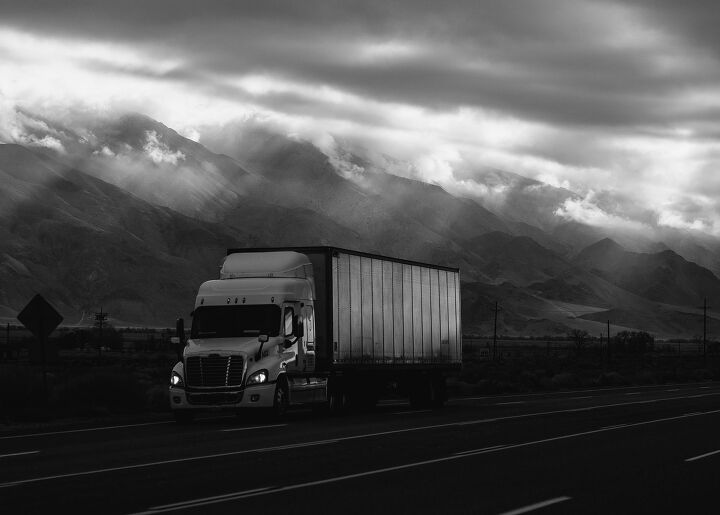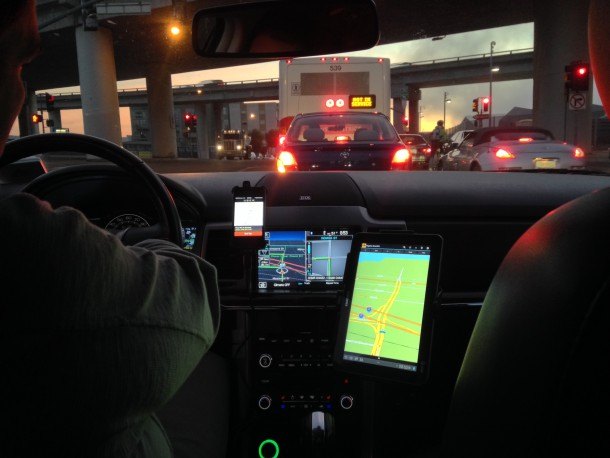#uber
Booze Tops Motivation List in Firsthand Ride-hailing Study
Annoyed by the lack of passenger data available from ride-hailing companies like Uber and Lyft, two researchers took matters into their own hands. Hoping to learn why people use ride-hailing apps to get around town, the authors of a study published in the Journal of Transport and Land Use joined forces, with one of the men volunteering to get behind the wheel of a 2015 Honda Civic on the mean streets of Denver, Colorado.
If Uber and Lyft wouldn’t share, maybe real, live passengers would.
Uber's Quarterly Losses Reach $1.1 Billion in Third Quarter
Uber’s in a bit of trouble after quarterly losses surged to $1.1 billion dollars. The ride-hailing giant has watched its sales growth dwindle this year, despite an expensive attempt to promote its global expansion.
It’s not the kind of thing you want to see from a company at the forefront of “revolutionizing” the automotive sector, especially since so many automakers seem keen on copying aspects of its business model.
What Does Ford Look Like As a Mobility Company?
These days, every automaker is in the midst of a metamorphosis, eager to emerge from their chrysalis as a “mobility company.” Even brands that don’t seem bent on completely revolutionizing their business model now use the term in reference to themselves.
Ford, which has positioned itself as a mobility company ever since Mark Fields was steering the ship, is among those pushing the narrative the strongest. Fields may have been fired for having a lofty, tech-focused vision that couldn’t charm investors, but much of it carried over to Jim Hackett’s tenure as CEO. Ford desperately wants to be seen as a cutting-edge nameplate.
However, the assumption among industry experts is that it’s lagging behind General Motors in terms of autonomous driving, electrification, and the ability to tap into alternative revenue streams. We sometimes wonder how accurate those assumptions are.
Uber Eager to Restart Autonomous Testing, This Time With Two Safety Drivers
Are two safety drivers better than one when it comes to the testing of self-driving cars? Uber Technologies feels it is, declaring as much to Pennsylvania’s road regulator. The company has filed an application with the state’s department of transportation to resume testing of autonomous Volvos, eight months after a fatal collision with a pedestrian on a darkened Arizona highway.
Uber stopped all autonomous testing in the wake of the March 18th collision, with the Arizona program dismantled for good. In Pittsburgh, the company hopes to show it learned from the safety lapses revealed in the accident investigation. These Volvos now have two fail-safes on board. Is it enough to restore the public’s trust?
More Evidence That Self-driving Cars Are on a Road to Nowhere
We’ve been critical that self-driving systems are, ahem, “oversold” by automakers and tech firms hoping to boost their stock valuations. That doesn’t mean autonomous vehicles won’t happen, just that the timeline is probably a lot longer than the public has been led to believe. Still, it makes sense to pursue AVs. The first company to achieve legitimate self-driving will blow the hinges off a door leading to an array of new business opportunities.
General Motors, long considered a frontrunner in the autonomous race, is apparently in desperate need of a second wind. Its Cruise self-driving unit is said to be woefully behind in its attempt to bring an autonomous vehicle to the commercial market by 2019. Some GM staffers have confessed that the current system isn’t even capable of identifying whether objects are in motion or not — which seems like an important distinction for a computer-controlled automobile to be able to make.
Freeway Spinouts and Injuries: Report on Uber-Google Lawsuit Shines Light on Self-driving Tech's Dangerous Early Days
If reading about young brainiacs with God complexes and too much money living in Silicon Valley makes you ill, best not read this while eating. For everyone else, you’re encouraged to take a peek at this report in The New Yorker.
It’s a Marianas Trench-deep dive into what occured in the years leading up to last year’s filing of an intellectual property theft lawsuit by Google’s Waymo autonomous vehicle unit against ride-hailing company (and rival self-driving vehicle developer) Uber. The alleged theft is intriguing, but the behind-the-scenes accounts of what went on at Google’s pre-Waymo self-driving car effort is the stuff of HBO and Netflix. There’s crashes and mayhem, egos, genius, and money, money, money.
Absolutely no sex, of course.
Auto Coalition Joins Forces With NATCO to Rethink City Streets, Share Driving Data
The National Association of City Transportation Officials (NATCO) has joined Ford, Uber and Lyft to work with the data platform SharedStreets to glean a better understanding of America’s infrastructure. Their collective goal is to “make it easier for the private sector to work with cities around the world and leverage data to improve urban mobility.”
That means different things to different companies. For Uber and Lyft, aggregate data on passenger pickups and drop-offs could be useful in deciding where to deploy their vehicles. The information could also prove helpful in telling city planners how to best manage traffic patterns. Uber also said it would track speeders and what on types of roads people are more apt to drive dangerously.
Toyota Investing $500 Million Into Uber for Driverless Partnership
Toyota Motor Corp. is set to drop about $500 million into Uber Technologies Inc. under an agreement that will see both companies work jointly on self-driving vehicles. The ultimate goal is for Toyota to bring to market its own autonomous vehicles using some of Uber’s hardware, with direct access to its ride-sharing network.
According to the automaker, the initial push will use the Sienna minivan as a platform for the “Autono-MaaS” (autonomous-mobility as a service) fleet. This makes the arrangement sound very similar to Waymo’s deal with FCA, which allows Alphabet’s autonomous arm to use the Chrysler Pacifica as a test platform for its self-driving hardware in exchange to having improved access to autonomous technology. However, Toyota said the partnership’s primary goal is improving safety and lowering transportation costs for the public.
Same Old Song: Study Claims Uber and Lyft Increasing Congestion Problem in Seattle
A new study from Schaller Consulting is claiming that ride-hailing services, like Uber and Lyft, contributed to 94 million additional miles being driven on Seattle-area roads in 2017. We’ve heard similar claims in the past. Data-backed allegations typically revolve around the notion that app-based services don’t encourage motorists to carpool so much as they pull pedestrians away from public transportation.
Considering how difficult most subway systems and bus lines are to enjoy, that’s not hard to believe.
Autonomous Tech Won't Displace Truckers, Biased Studies Claim
Last year, the Center for Automotive Research said robotic vehicles will eventually displace professional drivers in figures that will be “certainly in the millions.” Meanwhile, Goldman Sachs predicted trucking job losses of 25,000 per month as autonomous vehicles roll out in earnest. Truckers are going to end up like pinsetters and switchboard operators — saddled with a career that have been nullified thanks to automation, until they become extinct. However, we’ve also heard there’s a lack of manpower within the industry and that’s helping spur development.
This year, a glut of new studies emerged that suggest self-driving vehicles will actually benefit truckers. Unfortunately, they all come from sources that really want you to be stoked with the technology.
From Contractor to Employee: California Ruling Poised to 'Decimate' Uber, Lyft
An April ruling from the California Supreme Court determined that most contract workers, including those partnered with ride-hailing companies like Uber and Lyft, could actually qualify as employees under the state’s wage laws.
While that’s great in an era when wages can’t seem to match the constantly ascending cost of living and companies are cutting corners to maximize profits, it’s not so great for outfits that depend on contract workers to exist — like the aforementioned ride-hailing firms.
Uber and Lyft managed to balloon their revenues far beyond the billion-dollar mark, but neither company is currently profitable. Despite taking a cut of every single fare, expenses still result in a net loss for the companies during most rides. Assuming California forces them to tack on employee benefits and all the associated trimmings, both businesses could be in for a world of hurt.
Uber Killing Off Autonomous Trucking Division
Uber is shutting down its self-driving trucks unit due to a lack of progress and the controversy surrounding its multi-million dollar acquisition of Otto in 2016. The firm was purchased with the intent of developing self-driving cargo haulers, potentially saving the trucking company a fortune by outsourcing driving jobs to robots. But it was slow to reach that goal and ran head-on with a serious distraction almost immediately.
Initially, things looked promising. Otto was famous for engineering a truck that hauled a trailer full of beer across 120 miles of Colorado highway without human intervention. But it found a different sort of fame after its founder, Anthony Levandowski, took over as head of Uber’s self-driving car research and Waymo faulted him with handing over trade secrets.
As a former engineer for Google’s autonomous vehicle project (which would later evolve into Waymo), Levandowski was privy to sensitive information he was later accused of selling as part of the Otto buyout.
A Safer Route Home, but Is the Customer Always Right?
Depending on who you ask, Uber is either a godsend or a harbinger of civilization’s downfall. When the ride-hailing app went live in my corner of the world, disgruntled taxi drivers threatened violence against Uber drivers found waiting for a fare. I still get in the front seat out of habit. Cab drivers in other cities weren’t happy about their monopoly being threatened, either.
Elsewhere, Uber is a common way for urbanites to get around and, despite a number of past controversies involving the company and its drivers, people seem just fine with its presence. Naturally, for some users, safety remains an issue. But what if you could choose not only the route taken, but also the make and model of the vehicle showing up at your door? If the thought of riding in an old beater turns you off, why not wait until the closest vehicle with a five-star safety rating shows up? A new patent filing shows Uber wants to make that happen.
Uber Driver May Have Been Watching TV Before Fatal Collision: Police
The mash-up of fledgling technology that requires human vigilance to ensure safety and our natural inclination to become distracted by mobile devices appears to be the cause of the fatal Tempe, Arizona Uber crash in March.
According to a lengthy police report obtained by Reuters, the driver of the autonomous Volvo XC90 operated by Uber Technologies may have been watching the TV show The Voice in the moments leading up to the collision. The impact killed 49-year-old Elaine Herzberg, who was crossing the darkened street with her bicycle.
NTSB Releases Preliminary Report on Fatal Uber Crash; Vehicle 'Saw' Victim 6 Seconds Before Impact
The Volvo XC90 that hit Elaine Herzberg on a darkened Tempe, Arizona street was travelling 43 mph at the time of impact. Guided by a combination of cameras, radar sensors, and lidar designed to cut through the gloom, the two-ton SUV “saw” the victim 6 seconds before impact, according to a preliminary report released by the National Transportation Safety Board.
The Volvo, operated by Uber Technologies, applied the brakes 1.3 seconds after impact. However, it wasn’t autonomous software that ended up sending pressure the front and rear pistons. A human did that.






























Recent Comments